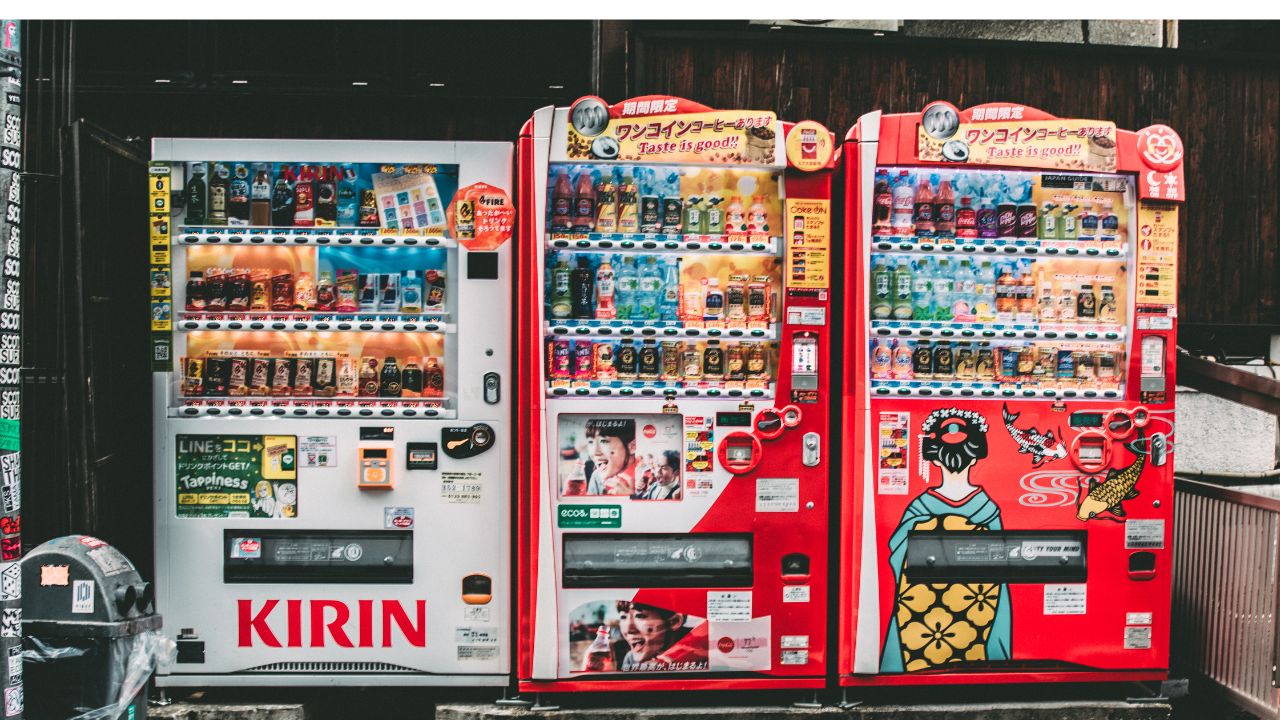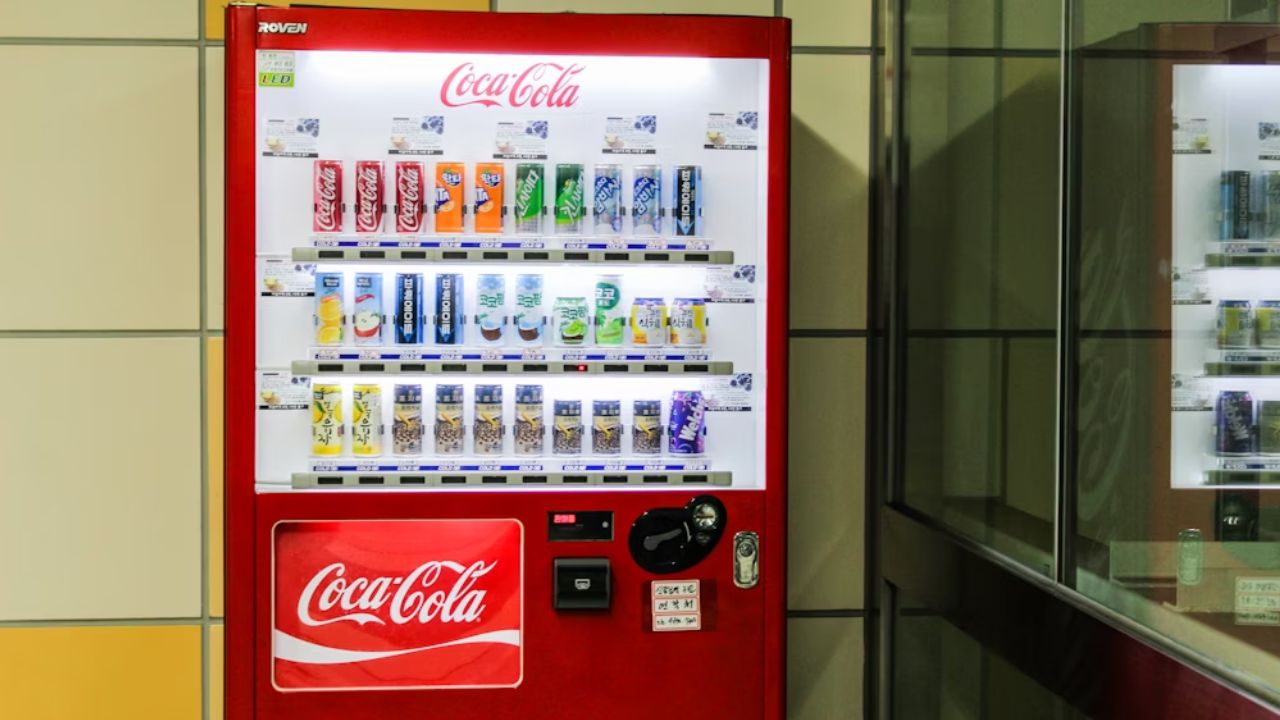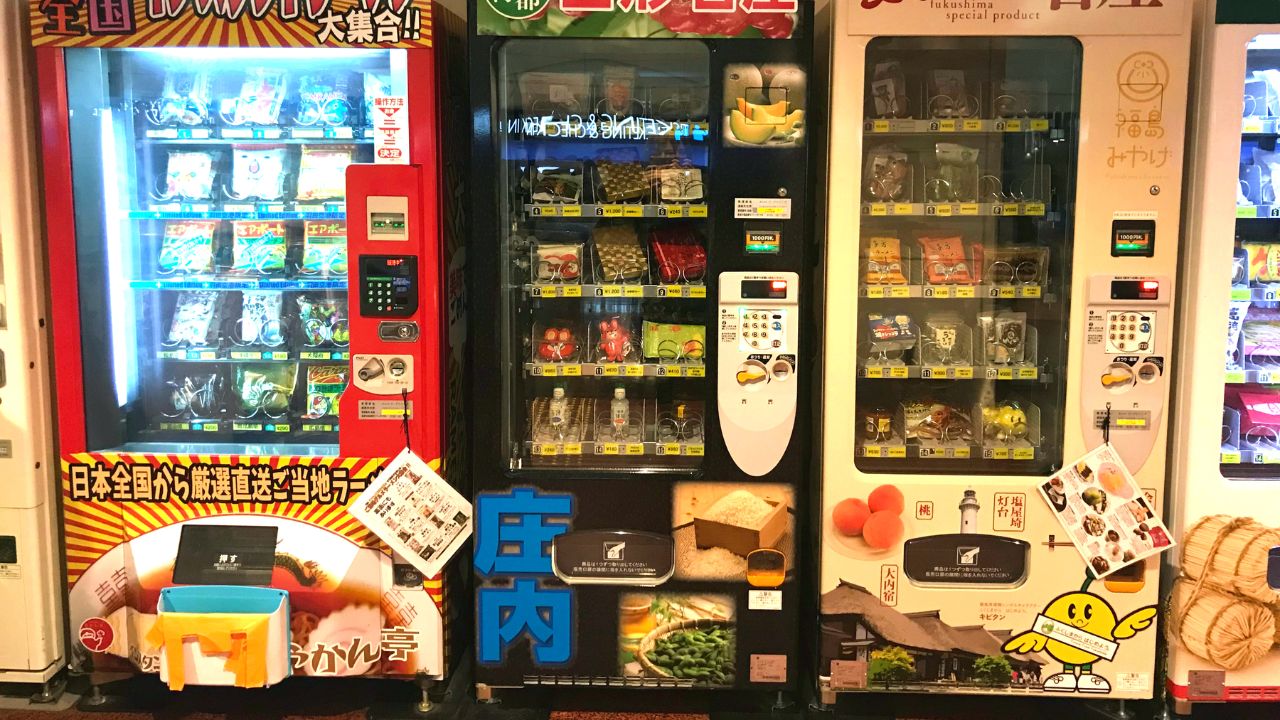If you’ve ever found yourself standing in front of a vending machine, pondering its vast array of snacks and drinks, you might have wondered how many items a vending machine can hold. Vending machines are convenient, offering various products in a compact space. But have you ever stopped to think about the capacity of these machines? From tantalizing snacks to refreshing beverages, vending machines offer an endless selection.
In this article, we’ll delve into the fascinating world of vending machines and explore just how many items a vending machine can hold. Whether you’re curious about the inner workings of these modern marvels or simply looking to satisfy your snack cravings, understanding their capacity is sure to provide some interesting insights. So, let’s embark on this journey to uncover the mysteries behind the items stocked within these convenient machines.
Vending Machine Capacity
Vending machine capacity is essential for both operators and consumers alike. But what factors determine the limit of items a vending machine can hold? Several key elements influence a vending machine’s capacity, from physical dimensions to product sizes and arrangement. The size and layout of the vending machine play a crucial role, as larger machines can typically accommodate more items than their smaller counterparts.
Additionally, the shape and packaging of products determine how efficiently they can be stacked and stored within the machine. Moreover, the type of vending machine, whether refrigerated for perishable items or standard for snacks and drinks, also affects capacity. Understanding these factors allows operators to optimize their vending machine setups to effectively meet consumer demand. This article will explore these factors to illuminate vending machines‘ intriguing world.

The Mechanics of Vending Machine Storage
Unlocking the mysteries behind the mechanics of vending machine storage unveils a fascinating world of innovation and efficiency. Within the confines of these seemingly ordinary machines lie intricate systems designed to maximize storage space while ensuring easy product access. The inner workings of vending machine storage involve a delicate balance between engineering and design. From the clever arrangement of shelves and compartments to the utilization of vertical space, every aspect is carefully orchestrated to optimize capacity.
Furthermore, advanced technologies such as conveyor belts and robotic arms further enhance storage efficiency, allowing for seamless replenishment and organization of products. Understanding these inner workings provides insight into the ingenuity behind vending machine design and highlights the meticulous attention to detail required to deliver a seamless customer experience. In this article, we’ll delve into the mechanics of vending machine storage to uncover the innovative solutions driving this integral aspect of modern convenience.
The Varied Sizes of Vending Machines
Vending machines come in various sizes, from small, compact units to large, multi-sectioned behemoths. Each size offers advantages and limitations, catering to different environments and consumer needs. Small vending machines are ideal for tight spaces or locations with limited foot traffic, offering convenience without taking up too much room. Medium-sized machines balance space efficiency and product variety, making them suitable for medium-traffic areas like offices or schools.
On the other hand, large vending machines boast extensive storage capacity and a wide selection of products, making them perfect for high-traffic locations such as shopping malls or airports. Understanding the differences in size allows operators to choose the right vending machine for their specific needs, ensuring optimal performance and customer satisfaction. This article will explore the characteristics of small, medium, and large vending machines to help readers decide when to select the perfect vending solution.
Maximum Capacity vs. Practical Limits
The distinction between maximum capacity and practical limits is crucial when operating vending machines efficiently. While maximum capacity refers to the maximum number of items a vending machine can theoretically hold, practical limits consider factors such as product rotation, accessibility, and customer preferences. While it may be tempting to cram a vending machine to its maximum capacity to maximize profits, doing so can lead to operational challenges such as product spoilage, difficulty in restocking, and reduced customer satisfaction.
Practical limits consider these factors to ensure operators and consumers have a smooth and sustainable vending experience. By balancing maximum capacity and practical limits, vending machine operators can optimize their inventory management strategies to maximize profitability while maintaining a high level of service. This article will explore maximum capacity versus practical limits to help operators make informed decisions when stocking their vending machines.

Vending Machines for Beverages and Beyond
While vending machines are often associated with snacks, their capabilities extend far beyond satisfying hunger. Over the past few years, vending machines have changed to provide a variety of goods, such as drinks and even non-food items. Beverages, in particular, have become a popular choice for vending machine offerings, with machines dispensing everything from bottled water and soda to freshly brewed coffee and tea.
Beyond beverages, vending machines now cater to diverse needs, from electronics and personal care products to clothing and artwork. This expansion into non-traditional vending machine items reflects a growing demand for convenience and accessibility in various consumer markets. By broadening the range of products they provide, vending machine owners can appeal to a wider audience and take advantage of new trends. In this article, we’ll explore the expanding world of vending machines, highlighting the diverse range of products available beyond traditional snacks.
Overcoming Space Constraints
Overcoming space constraints is a common challenge for vending machine operators, especially in locations with limited square footage. To maximize storage within these constraints, operators employ several strategic approaches. One effective strategy is to optimize product packaging to minimize wasted space within the vending machine.
Compact and stackable packaging efficiently uses available space, ensuring that every inch counts. Additionally, utilizing adjustable shelving and modular configurations enables operators to customize the internal layout of the vending machine to accommodate different product sizes and shapes. Another tactic is prioritizing high-demand items and rotating stock frequently to balance variety and storage capacity.
Furthermore, implementing smart inventory management systems that monitor product levels in real-time can help operators make informed restocking decisions and prevent overstocking. These strategies allow vending machine operators to overcome space constraints while maximizing storage and optimizing profitability effectively. In this article, we’ll detail these strategies to provide actionable insights for operators facing space limitations.
The Evolution of Vending Technology
The evolution of vending technology has revolutionized how vending machines operate, particularly regarding storage efficiency. Traditional vending machines relied on manual stocking and rudimentary mechanisms, limiting their storage capacity and efficiency. However, technological advancements have led to the development of more sophisticated vending machines equipped with state-of-the-art features designed to increase storage efficiency. For example, automated inventory management systems make real-time product-level monitoring and automatic restocking possible, guaranteeing that machines are always loaded with in-demand goods.
Moreover, innovations such as robotic arms and conveyor systems facilitate efficient product retrieval and organization within the machine, maximizing storage space while streamlining the vending process. Additionally, advancements in refrigeration technology have expanded the range of perishable items that can be stored in vending machines, further enhancing their versatility and appeal. By embracing these technological advancements, vending machine operators can improve storage efficiency, reduce operational costs, and enhance the overall customer experience. In this article, we’ll explore the evolution of vending technology and its impact on storage efficiency in detail.
Customization Options
Customization options are crucial in tailoring vending machine capacity to meet specific demand patterns and consumer preferences. Vending machine operators have the flexibility to customize their machines’ internal layout and configuration based on location, demographics, and product popularity. For instance, operators can adjust shelf heights, compartment sizes, and product arrangements to accommodate different items and optimize storage space.
Additionally, vending machines with smart technology and data analytics capabilities can analyze sales data in real time to identify trends and adjust inventory accordingly. By leveraging customization options, operators can ensure that their vending machines are stocked with the right mix of products to meet demand effectively, thereby maximizing sales and customer satisfaction. In this article, we’ll explore the various customization options available to vending machine operators and their impact on capacity management.

Cold Storage in Vending Machines
Temperature considerations are paramount in vending machines, especially those stocking perishable items like beverages and snacks requiring refrigeration. Cold storage in vending machines ensures the freshness and safety of products while extending their shelf life. Advanced refrigeration technology allows vending machines to maintain precise temperature controls, keeping perishable items at optimal conditions to prevent spoilage and maintain quality.
Additionally, insulated compartments and doors help preserve cold temperatures even in ambient environments, ensuring consistent cooling performance. Temperature monitoring systems provide operators with real-time data on internal conditions, allowing for timely maintenance and adjustments to prevent malfunctions. Vending machine operators can instill consumer confidence regarding product quality and safety by prioritizing temperature control. In this article, we’ll explore the importance of temperature considerations in vending machines, highlighting the technologies and strategies used to maintain cold storage effectively.
Packing Efficiency for Maximum Inventory
The art of organization is instrumental in maximizing inventory within vending machines and optimizing storage space while ensuring easy access to products. Efficient packing techniques are crucial in achieving this balance, allowing operators to fit more items into a limited space without sacrificing accessibility or presentation. Operators can minimize wasted space and maximize storage capacity by strategically arranging products based on size, shape, and demand.
Utilizing stackable and modular storage solutions further enhances packing efficiency, allowing for flexible configurations that adapt to changing inventory needs. Moreover, implementing clear labeling and signage helps customers navigate the vending machine effortlessly, enhancing the overall user experience. By mastering the art of organization, vending machine operators can streamline inventory management, reduce restocking frequency, and ultimately increase profitability. This article will delve into the organization and packing efficiency principles, offering practical tips for operators looking to optimize inventory within their vending machines.
Trends in Vending Machine Capacity
Future innovations in vending machine capacity are poised to revolutionize the industry, catering to evolving consumer demands and technological advancements. One notable trend is the development of compact yet high-capacity vending machines designed to maximize storage efficiency while minimizing footprint.
These machines leverage cutting-edge storage technologies such as vertical stacking and automated retrieval systems to pack more items into a smaller space. Additionally, advancements in refrigeration and preservation techniques enable vending machines to store a wider range of perishable items, expanding their product offerings and appeal. Furthermore, integrating smart technologies such as artificial intelligence and machine learning allows vending machines to analyze consumer preferences and adjust inventory in real time, ensuring optimal stock levels and product availability.
As the demand for convenience and on-the-go solutions continues to grow, future innovations in vending machine capacity will play a crucial role in shaping the landscape of retail and hospitality industries. In this article, we’ll explore emerging trends and technologies in vending machine capacity, offering insights into the future of automated retail.
Conclusion
The question of how many items a vending machine can holds reveals a fascinating intersection of technology, logistics, and consumer preferences. While the answer varies depending on factors such as machine size, product packaging, and technological advancements, one thing remains clear: vending machines continue evolving to meet modern consumers‘ ever-changing needs. From compact machines optimized for space efficiency to large-scale systems capable of accommodating a diverse range of products, the capacity of vending machines reflects the ingenuity and innovation driving the retail industry forward.
As advancements in technology and design continue to push the boundaries of what is possible, the future of vending machine capacity holds limitless potential. Whether stocking snacks, beverages, or non-traditional items, vending machines are poised to remain a staple of convenience and accessibility in various settings. In this dynamic landscape, the question of how many items a vending machine holds is not just a matter of quantity, but a testament to the ongoing evolution of retail innovation.
FAQ
How many items can a typical vending machine hold?
The capacity of a vending machine varies depending on factors such as size, configuration, and product packaging. However, on average, a standard vending machine can hold anywhere from 50 to 100 different items.
What types of items can be stocked in a vending machine?
Vending machines can stock various items, including snacks, beverages, toiletries, electronics, and artwork. The range of items depends on the vending machine’s design and purpose.
Do vending machines have limitations on the size of items they can hold?
Yes, vending machines typically have limitations on the size of items they can hold. Larger items may require special vending machines with adjustable shelves or compartments to accommodate their size.
How often do vending machines need to be restocked?
The frequency of restocking varies depending on factors such as location, product popularity, and machine capacity. High-traffic locations may require daily restocking, while others may only need to be restocked every few days.

